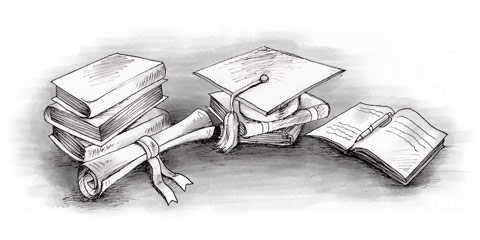In theory, Egyptian children have access to education from as early as age four, where they will enrol in pre-school and kindergarten. The Ministry of Education stipulates that no child under four may enrol in a state school (international schools may take children as young as three years and nine months), and caps class sizes at 45 students. According to the guidelines, each “class” of 45 students should be taught by two teachers and an assistant (ideally, they should also be supplemented by a music teacher).
In pre-school and kindergarten, the Egyptian system emphasizes social, physical and emotional development rather than “academic” learning. At this level, children are not given homework.
Primary school in Egypt
Primary schools account for well over half of Egypt’s enrolled students. It is at this level that some Egyptian students will branch into religious or international schools. Most primary school teachers are women, an ironic statistic considering that many Egyptian girls (especially in poor areas) will drop out of school early in order to marry. Children attend primary school based on where they live – a school is usually within walking distance of their home.
The school day itself generally begins very early and ends in the early afternoon. Lunch is generally served at a school cafeteria, and as you might expect the food quality is predictably unimpressive. The first two years or so of primary school are generally dedicated to learning reading and writing, with more emphasis on math and science in the years that follow.


